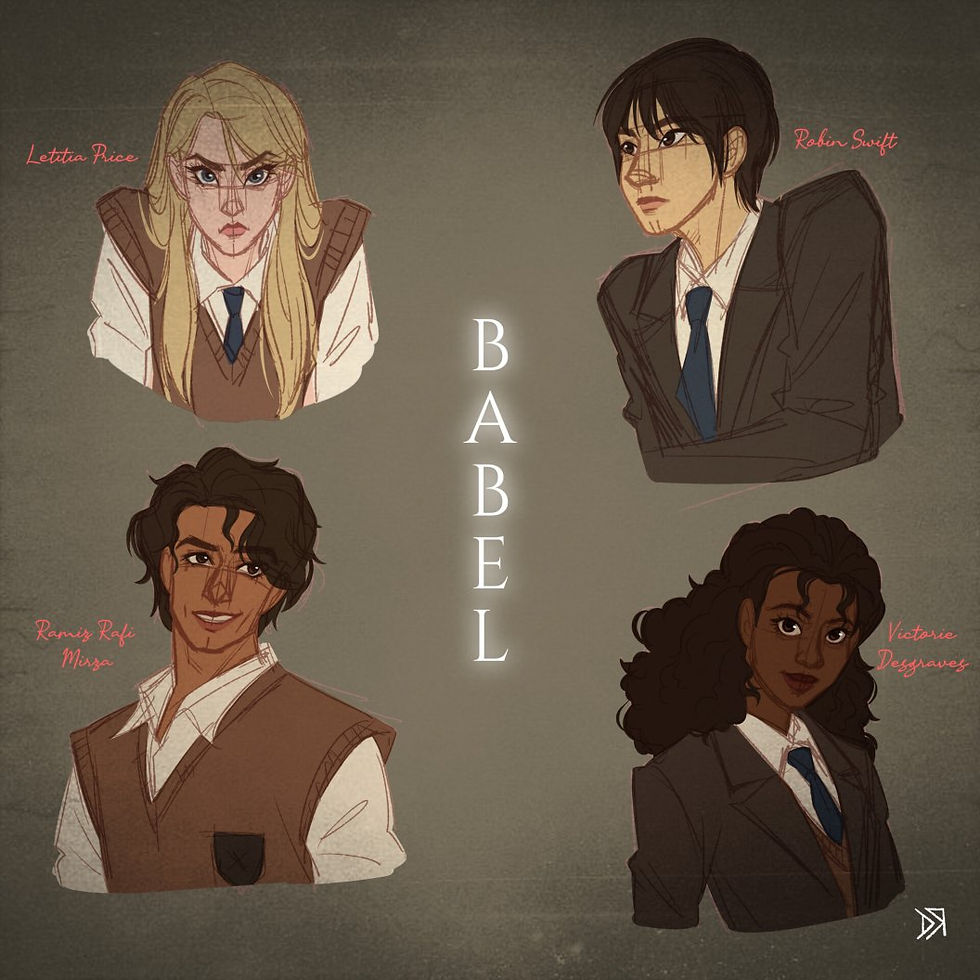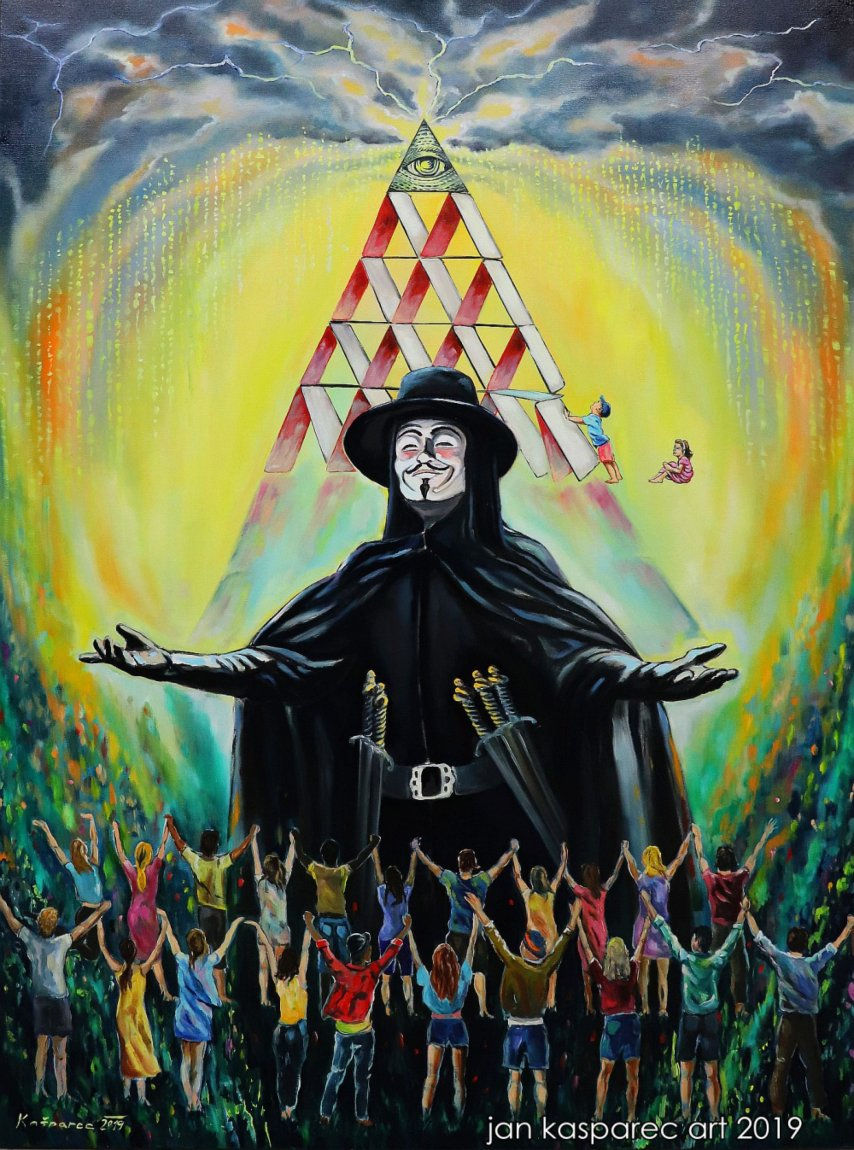The Spark of Revolution
- zachlaengert
- Jul 29
- 6 min read
Insights into the complexities of enacting societal change
Books of a Theme
In the past week I read – or perhaps more accurately devoured – City of Last Chances and House of Open Wounds by Adrian Tchaikovsky, the first two books in his Tyrant Philosophers series. I knew going in that this man is a genius, but these novels still utterly blew me away with their complex themes and terrific worldbuilding (I'll save my in-depth praise for the latter for another time.)
Given the title of the series, it should be no surprise that it prominently explores the attempts of Palleseen colonizers to impose their doctrine of 'perfection' upon other peoples and cultures. They have it all figured out, after all, so why shouldn't they fight tooth and nail to share their insights with everyone else?
This may sound eerily familiar, if you've read my posts on Seth Dickinson's Masquerade series. (Or, I suppose, if you have a good grasp on world history.) Dickinson likewise has Falcresti philosophers actively pursuing a doctrine which will 'perfect' the world around them, creating a global homogenic society ruling itself on behalf of the colonizing elites.
And although it's been almost two years since I read it, I think it's also worth adding Babel, or the Necessity of Violence by R.F. Kuang to the conversation. Certainly Professor Lovell and his associates are certainly Tyrant Philosophers in their own right and Kuang's magic system bears thematic similarities to Tchaikovsky's, but most of all because it is another book about the complexities of revolution.
Spoilers below for The Traitor Baru Cormorant (2015), Phoenix Extravagant (2020), House of Last Chances (2022) and Babel (2022), plus a few references to other works by these authors.

Fantastical Tyranny
We could talk almost forever about the evils of empire & colonialism in the real world. I touched on it a tiny bit in relation to Seth Dickinson’s Masquerade novels, which approach the topic from a fairly grounded perspective and without adding magical complications.
The first book I read which truly embraced the implications of supernatural colonialism was Yoon Ha Lee’s Phoenix Extravagant, where the colonialists drew their magical power directly from the destruction of colonized peoples’ cultural and historical artifacts. This revelation deeply moved me at the time, and did so again when I saw similar ideas in House of Last Chances and Babel.
Tchaikovsky’s system is most similar to Lee’s, although in his series it is magical artifacts, people and gods from different cultures forcibly ‘decanted’ into pure magical power that the Palleseen use for everything from their gun-like batons to lighting streetlamps.
Kuang’s fascinating system is based on translation, with British Translators wringing magic from the meaning that is ‘lost in translation’ when moving from one language to another. Each such act can only be done once, meaning that the British are forever desperate to plumb new languages for the power that runs their Empire. Kuang posits that: "Translation means doing violence upon the original, means warping and distorting it for foreign, unintended eyes."
Thus each of these stories see the fabric of colonized cultures being mutilated for the direct empowerment of their oppressors, feeding the leviathan so that it can hunt yet more prey. Part of this process is a loss and homogenization of cultural identity, which in turn makes room for the influence of the colonizer's culture and doctrine.
Aside from the mirror these stories hold to real history, do you know of an older fictional story/idea that all three authors might be drawing inspiration from? One friend compared it to Marrow Thieves (2017), but I wonder whether there isn’t a popular, definitive work that first dreamed up this metaphor for colonial violence.

Lighting the Spark
Under the yoke of these many faces of evil are characters asking questions that feel more relatable every day: Is change possible? What will it look like? When will it happen?
Would it surprise you to learn that none of these four stories present a particularly happy outcome?
In Phoenix Extravagant and Babel (and even House of Open Wounds, to an extent), the simple truth is that a small group of people aren't going to be able to topple massive institutions in a single move – even with their hands on the vital magical core of the oppressor's power. Babel even sees the students trying to appeal to the populace once they've acted, but the effort is too little and too late; the narrative entirely out of their hands. Even though they ultimately remove British access to magic, it's unclear whether the status quo will change much at all.
City of Last Chances depicts the colonized city of Ilmar as actively considering revolution even before the chaos of the plot begins. The Siblingries (unions), Vultures (street gangs), Ravens (conspirators from the old aristocracy), Herons (river gangs), Shrikes (violent anarchists), Gownhall students and even the Palleseen occupiers all get chapters where they raise those very questions I put above.
The issue, as you might guess, is that each group has their own answers to those questions. Ilmar's occupation is a very recent development, and these factions still hold a lot of resentment for each other; even if less than they hold for the Tyrant Philosophers. When the spark is lit, the students, workers and a few Shrikes make a valiant stand. The Vultures don't help directly, but get rich and spread chaos by raiding the occupiers' administrative centers.
The Ravens, with the most resources and influence, don't raise a finger, because they fear a liberated Ilmar where they aren't on top. The flame is extinguished pretty quickly, but not without a ghost/zombie dance party/army and a lot of freed demons giving the occupiers a real headache. (Stick around for that worldbuilding post, I told you it was good!)

All of the above stories look like happy fairy tales compared to The Traitor Baru Cormorant. For most of Dickinson's novel, Aurdwynn's goal of overthrowing their Falcresti occupiers seems to have similar issues to those faced by Ilmar: too many factions with different goals and timeframes, impossible to align into a meaningful resistance. Aurdwynn rose up once before in living memory, the failure of which bruised the ego of the nation and weakened their rebellious spirit (and ostracized Tain Shir, as I recently wrote about).
But between Falcresti traitor Baru and Aurdwynni Duchess Tain Hu, they manage to forge a new rebellion. They cut deals, assure loyalty and prove the cause in a dozen ways in order to get some of the Aurdwynni Duchies into their corner. It's an absolute triumph of political maneuvering for an inspirational cause... right up until the book's title proves itself doubly true.
Baru's mission from Falcrest was to foment a second rebellion that might otherwise have been another decade in the making; to expose any disloyalty, no matter how deeply hidden. As I've discussed in my other posts on The Masquerade, she has a reason for doing so: hoping to destroy all of Falcrest from within. She's also not even the only one to betray Aurdwynn for that goal, as she later learns her co-conspirator Xate Yawa has also been made a Falcresti cryptarch.
(I also still intend to write a post dedicated to Baru and Tain Hu, the relationship which defines so much of the series and especially Baru's struggle with her double betrayal.)

Birds of a Feather
I find it intriguing that all four books I discussed today have a bird-related theme to one degree or another. Even outside of the oh-so-American eagle, I suppose that birds represent a yearning for freedom that is highly relevant to each of these stories. (Might be worthy of a Swift Riffle post at some point?)
These stories are filled with characters (and even societies) experiencing deep internal conflict between loyalty to their cultural history and the oppressive will of colonizing forces. How long can anyone sit by and watch their way of life be ground up for fuel before they try to take a stand? How the hell can you ensure that when you do rise up, people will follow?
Hope is a shockingly rare sight here, and I think it's partially because these authors understand and want to convey how difficult and complex it is to achieve real change. Heroism and bright ideas are far from enough; movement needs to be systemic and grounded if it is going to have a chance.
---
Ended up being a bit more general than I initially intended, but also far larger a topic. Let me know if you'd be interested in a deeper look into anything I brought up today!
Thanks for reading and until next time <3







Comments